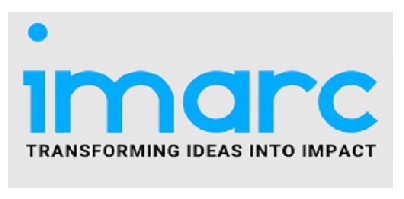Manufacturing Industry Today
EV Battery Components Manufacturing Plant Setup 2025: Machinery Requirement, and Cost Analysis
EV battery components refer to the essential materials and parts used in electric vehicle batteries, primarily lithium-ion types. These components include cathodes, anodes, separators, electrolytes, current collectors, and battery management systems (BMS). Each plays a crucial role in energy storage, power delivery, and safety. The choice and quality of these components directly impact battery efficiency, lifespan, charging speed, and vehicle performance.
Setting up an EV battery components manufacturing plant involves sourcing raw materials, installing precision machinery, and ensuring quality control systems. It requires skilled manpower, significant capital investment, clean energy access, and regulatory compliance to meet growing demand and industry standards.
IMARC Group’s report, titled “EV Battery Components Manufacturing Plant Setup Cost 2025: Industry Trends, Plant Setup, Machinery, Raw Materials, Investment Opportunities, Cost and Revenue,” provides a complete roadmap for setting up an EV battery components manufacturing plant. It covers a comprehensive market overview to micro-level information such as unit operations involved, raw material requirements, utility requirements, infrastructure requirements, machinery and technology requirements, manpower requirements, packaging requirements, transportation requirements, etc.
EV Battery Components Industry outlook 2025
The EV battery components industry is experiencing rapid growth in 2025, driven by surging global demand for electric vehicles, government incentives for clean mobility, and stricter emission regulations. As automakers ramp up EV production, the need for advanced, high-performance battery materials like lithium, nickel, and cobalt is accelerating. Innovations in solid-state batteries, recycling technologies, and localized supply chains are reshaping the market. With countries pushing for EV adoption targets and energy storage solutions, the EV battery components sector is becoming a strategic investment area with significant potential for high returns and technological leadership.
Request for a Sample Report: https://www.imarcgroup.com/ev-battery-components-manufacturing-plant-project-report/requestsample
Key Insights for EV Battery Components Manufacturing Plant Setup
Detailed Process Flow
- Product Overview
- Unit Operations Involved
- Mass Balance and Raw Material Requirements
- Quality Assurance Criteria
- Technical Tests
Project Details, Requirements and Costs Involved:
- Land, Location and Site Development
- Plant Layout
- Machinery Requirements and Costs
- Raw Material Requirements and Costs
- Packaging Requirements and Costs
- Transportation Requirements and Costs
- Utility Requirements and Costs
- Human Resource Requirements and Costs
Buy Now: https://www.imarcgroup.com/checkout?id=31162&method=1911
Capital Expenditure (CapEx) and Operational Expenditure (OpEx) Analysis:
Project Economics:
- Capital Investments
- Operating Costs
- Expenditure Projections
- Revenue Projections
- Taxation and Depreciation
- Profit Projections
- Financial Analysis
Profitability Analysis:
- Total Income
- Total Expenditure
- Gross Profit
- Gross Margin
- Net Profit
- Net Margin
Key Cost Components of Setting Up an EV Battery Components Plant
- Land and Infrastructure: Acquisition, site development, and construction of factory buildings.
- Machinery and Equipment: Specialized tools for mixing, coating, cell assembly, drying, and testing.
- Raw Materials: Procurement of materials like lithium, graphite, nickel, cobalt, electrolytes, and binders.
- Utilities and Power Supply: High energy demand for cleanrooms, HVAC, and continuous manufacturing processes.
- Labor and Workforce: Hiring and training of skilled technicians, engineers, and operators.
- Technology and R&D: Investment in battery chemistry innovation, process optimization, and quality control.
- Licensing and Compliance: Costs related to environmental permits, safety standards, and regulatory approvals.
Speak to an Analyst for Customized Report: https://www.imarcgroup.com/request?type=report&id=31162&flag=C
Economic Trends Influencing EV Battery Components Plant Setup Costs 2025
- Raw Material Volatility: Prices of lithium, cobalt, and nickel remain unstable due to global supply chain pressures and geopolitical risks.
- Government Incentives: Subsidies, tax breaks, and production-linked incentives (PLIs) are reducing setup costs in several countries.
- Localization Drives: Push for domestic production to reduce import dependence is encouraging plant setups, especially in Asia and Europe.
- Technological Advancements: Automation and process innovations are increasing efficiency but require higher upfront capital investment.
- Sustainability Demands: Investments in green technologies and low-emission manufacturing are adding to initial costs.
- Inflation and Interest Rates: Rising global inflation and higher borrowing costs are impacting capital expenditure and operating budgets.
- Global EV Demand Surge: Expanding EV markets are encouraging economies of scale, influencing large-scale investment decisions.
Challenges and Considerations for Investors
- High Capital Intensity: Significant upfront investment is required for land, machinery, and advanced technologies.
- Raw Material Dependency: Limited and geographically concentrated sources of key materials like lithium and cobalt pose supply risks.
- Technological Obsolescence: Rapid innovation in battery chemistry may render existing setups outdated.
- Regulatory Compliance: Navigating strict environmental and safety regulations can be complex and costly.
- Skilled Workforce Shortage: Shortfall in trained professionals for battery tech and plant operations may affect productivity.
- Market Competition: Increasing number of global players intensifies pricing and margin pressure.
- Supply Chain Stability: Logistics disruptions and material import delays can hinder consistent production flow.
Conclusion
The EV battery components industry offers strong growth potential, driven by rising EV demand and technological advancements. Setting up a plant involves strategic investment, innovation, and regulatory alignment. With the right infrastructure and planning, manufacturers can capitalize on this booming sector and secure long-term profitability in the clean energy transition.
𝗕𝗿𝗼𝘄𝘀𝗲 𝗠𝗼𝗿𝗲 𝗥𝗲𝗹𝗮𝘁𝗲𝗱 𝗥𝗲𝗽𝗼𝗿𝘁𝘀:
- Copper Cable Manufacturing Plant: https://www.imarcgroup.com/copper-cable-manufacturing-plant-project-report
- Smart Jump Rope Manufacturing Plant: https://www.imarcgroup.com/smart-jump-rope-manufacturing-plant-project-report
- Outdoor Grill Manufacturing Plant: https://www.imarcgroup.com/outdoor-grill-manufacturing-plant-project-report
About Us: IMARC Group is a global management consulting firm that helps the world’s most ambitious changemakers to create a lasting impact. The company excel in understanding its client’s business priorities and delivering tailored solutions that drive meaningful outcomes. We provide a comprehensive suite of market entry and expansion services. Our offerings include thorough market assessment, feasibility studies, company incorporation assistance, factory setup support, regulatory approvals and licensing navigation, branding, marketing and sales strategies, competitive landscape, and benchmarking analyses, pricing and cost research, and procurement research.
Contact Us:
IMARC Group
134 N 4th St. Brooklyn, NY 11249, USA
Email: sales@imarcgroup.com
Tel No:(D) +91 120 433 0800
United States: +1–631–791–1145
Share on Social Media



Other Industry News
Ready to start publishing
Sign Up today!








